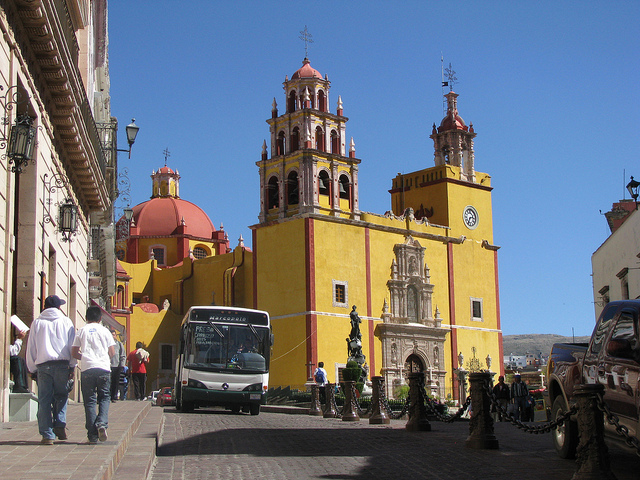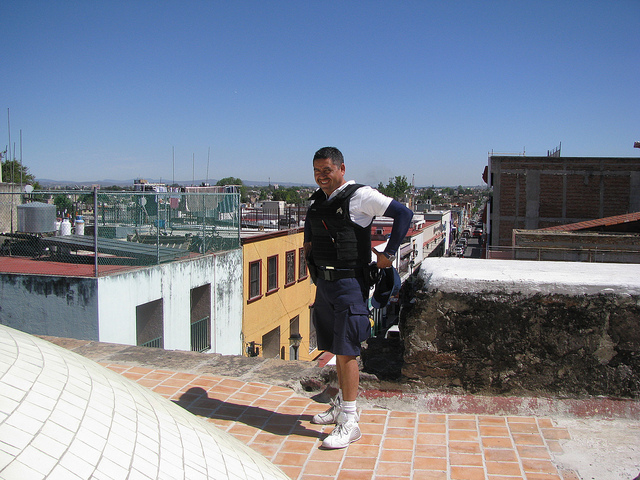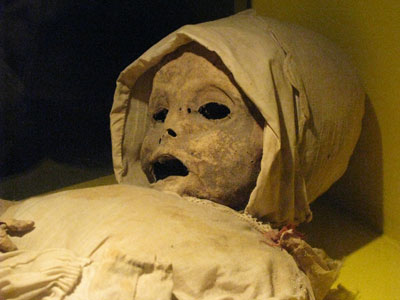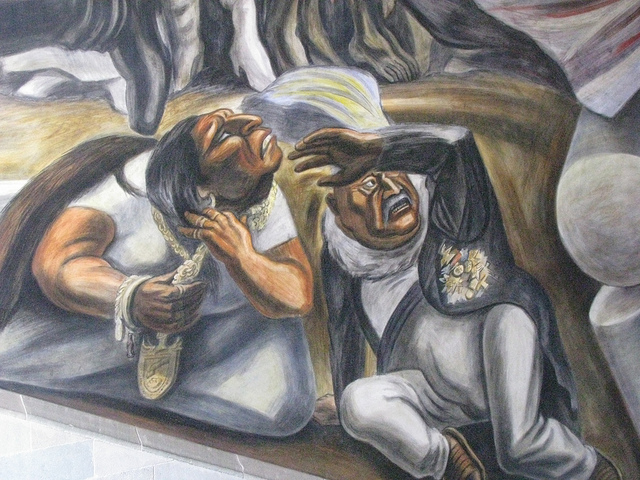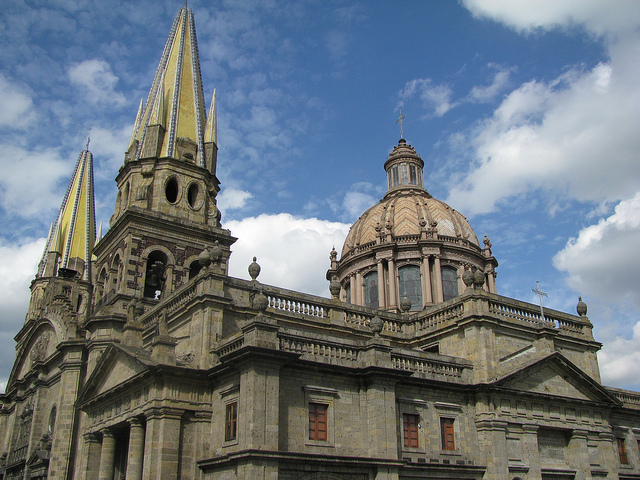During my language study trip to Guadalajara I had allocated two weekends for out-of-town excursions with the goal of visiting some of Mexico’s other colonial cities. I had done extensive research, had surfed the net and also contacted the Mexican National Tourist Office in Toronto to get a collection of brochures of cities that were within easy driving distance from Guadalajara. As I reviewed my literature and the choice of cities to visit, my attention was drawn in by the city of Guanajuato, one of Mexico’s historic mining towns. Colonized very early, in the 1520s, Guanajuato is scenically embedded in the surrounding mountains and has a fascinating collection of historic architecture. What makes Guanajuato really unique are its hilly topography, its narrow winding streets and its fascinating network of underground tunnels that today serve as roads.
My decision was made: Guanajuato would be the destination for my first weekend excursion from Guadalajara. So early on February 5 I got up, hopped into my pre-booked taxi at 6:40 in the morning and got dropped off at the Estación Nueva in Guadalajara. My bus tickets with the ETN bus line had already been reserved over the Internet and I was able to check in quickly.

View of Guanajuato from the mountains
Interestingly, Mexico does not have much of a functional passenger railway network, but what it lacks in train travel it definitely makes up for in bus transportation. All Mexican cities are connected by an extensive network of private bus companies that offer service of different classes. The ETN bus company is one of the more upscale transportation companies and its tag line is “La Línea mas Cómoda” – the most comfortable bus line. Tickets were quite reasonable, about $26 one way to Guanajuato and the trip would take about four hours.
ETN has its own waiting room at the Guadalajara bus terminal, and before I boarded the bus, very attractive looking hostesses were handing out a snack package with a soft drink and some food to all the passengers. The interior of the bus was very luxurious, with only three seats per row, several television screens, an onboard washroom and even wireless Internet access on the bus. Stretching out my legs on my plush reclining chair, I settled in for a comfortable ride to Guanajuato. Although the curtains were drawn throughout the bus as the other passengers wanted to sleep, I occasionally peeked out the window to look at the passing mountainous landscapes that were followed by flatter agricultural lands.

My expert local guides: Sujei and Roberto
About three hours into the trip we made a brief stop in León, Mexico’s fifth most populous city, and we arrived around 11:20 in Guanajuato. My local expert Sujei and her colleague Roberto from Tourism Guanajuato, were there to pick me up so we would be able to start our whirlwind tour of this historic city. Fortunately the weather was cooperating today: after almost a week of cold and rainy weather we were enjoying a day of brilliant sunshine today.
Our first stop was at my hotel for the next two days to drop off my luggage. The Quinta Las Acacias is one of Guanajuato’s most popular boutique hotels, and I would get an opportunity later in the afternoon to do a tour and an interview with the hotel’s general manager. I was certainly very impressed by my spacious hotel room called “El Charro” which was equipped with a king size bed, a large flat-screen television, a Mexican-themed sitting area and a gorgeous modern bathroom with a huge round Jacuzzi tub. I was already looking forward to seeing some of the other uniquely decorated rooms in this upscale hotel.

My comfortable room, “El Charro”, at the Quinta Las Acacias
Shortly after I rejoined Sujei and Roberto and we started our city tour. Our first destination was one of the historic silver mines up on the mountain. We started to drive through the city on a street called Paseo de la Presa, one of the oldest streets in Guanajuato. The complex layout of the city became apparent right away and with a touch of humour Sujei said that “ten out of ten tourists get lost when they come to Guanajuato”. Another characteristic that caught my eye right away was the colourfully painted house façades that catch the eye with bright splashes of pink, orange, blue and purple. Sujei explained that the state government of Guanajuato actually offers incentives to local home owners to paint their houses in bright colours, adding to the unique appearance of this city.
As we drove through the narrow cobble-stoned streets of the city my local expert explained that Guanajuato, whose name literally means “hill of the frogs” in the local indigenous language, was designated a UNESCO World Heritage Site in 1988 due to its unique historic, cultural and architectural significance. Guanajuato indeed played an important role during the Mexican War of Independence against Spain in 1810 as well as during the Mexican Revolution in 1910. The State of Guanajuato has two UNESCO-designated World Heritage Sites: the city of Guanajuato and the town of San Miguel de Allende, another picturesque mountain town that has a very large community of foreign retirees and expatriates.

Courtyard at the Quinta Las Acacias
Guanajuato is also world renowned for its annual Cervantes Festival that brings together performing artists from all over the world. It has been celebrated since 1972 and the city itself was designated the ”Capital Cervantina de América” in 2005. Dancers, comedians, musicians and orchestras from all over the world have participated in Guanajuato’s Festival Cervantino, including illustrious artists such as Leonard Bernstein, Rudolph Nureyev, Yehudi Menuhin, the Vienna Philharmonic Orchestra, the Bolshoi Ballet, the Royal Shakespeare Company, the New York Philharmonic and many more.
Heading up on the Carretera Panoramica highway, we stopped at the Boca Mina San Ramón, part of the famous La Valenciana district, a mine that was originally started by the Spanish in 1558 to take advantage of one of Mexico’s richest silver deposits. One fifth of the world’s gold and silver is said to have come from here between the 16th century and the early 19th century. A historic building with a small museum, a gift shop and a bar surround a scenic courtyard that is often used for weddings and special vents. Behind the bar is the entrance to the mine shaft which takes you down to a depth of about 60 metres where it ends.

The mine shaft at the La Valenciana Mine
